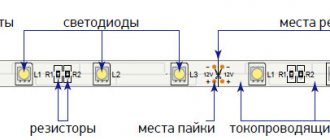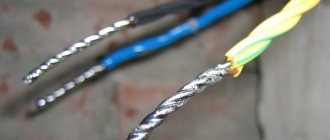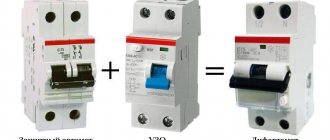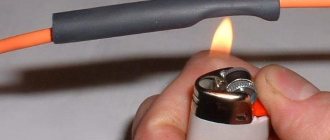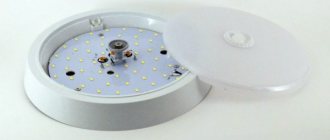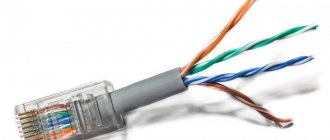Wire connections require additional mechanical protection and good insulation. Sometimes insulating tape is used for these purposes, but such protection is not very reliable. The sticky layer loses its properties over time, so the insulating tape may slip from the insulation site. Insulating tubes or casings for wires are much more reliable in this regard.
This simple product is very often used in electrical engineering and for other purposes. But in order to understand what problems can be solved using ordinary cambrics, let’s first find out what they are and how they are designed.
Types of cambrics
The materials from which the tubes are made allow them to be classified into several main types:
- PVC cambrics;
- Tubes, in the production of which materials based on cotton fabrics are used;
- Heat-shrinkable casings;
- Heat resistant.
Heat-shrinkable cambrics are divided into:
- Fluorescent tubes that glow and are used where lighting is limited;
- High voltage, having resistance and used for high voltage;
- Teflon, resistant to fire and chemical environments;
- Having a corrugated surface, used in areas where it is necessary to provide friction and prevent slipping.
Products TKR, TKSP - selection procedure
Special silicone electrical insulating casings are represented by such common brands as TKR, TTS-SV, TKSP, TETS-PM, TKR-M, TRT and others.
For the manufacture of flexible heat-resistant tubes of the TKR-M brand, organosilicon mixtures are used that meet the requirements of GOST 17675. They are usually chosen when it is necessary to obtain reliable electrical insulating protection of the joints formed during installation. To increase it, special reinforced products of the TTSP-SV or TKSP brands are used.
The latter are made in the form of a special stocking made of tightly woven cord (glass thread), impregnated with varnish based on organosilicon compounds and coated with rubber of the same class.
All of the listed types of heat-resistant tubes can be purchased at any retail outlet that has electrical installation products in its assortment. Using heat shrink casings is very simple.
You need to put them on the wire, place them in the required place and heat them with a lighter, match or hot air gun. Heating is carried out from the center to the edge or from one edge to the other. When the material has shrunk and cooled, the insulation process is complete.
Heat-resistant cambrics
This type of thermal insulation tube is made of high temperature resistant fiberglass materials. They do not corrode or burn, and are able to maintain their shape under conditions of moderate mechanical load.
- For cambrics, fiberglass is impregnated with resins and polymers, and therefore has good insulating properties.
- Fluctuations in the operating temperature of devices occur from -600C to +5300C. Fiberglass retains its structure even at very low temperatures.
- There are types of tubes with solder inside. That is, inside a heat-resistant plastic tube, there is a solder rim.
- It melts when heated and envelops the twists of the cores, which must first be tinned.
In addition, the device contains rings along the edges that resist movement and hold the tube in place.
Structure
The color marking of cambrics is developed and produces models with more than 100 shades. You can also order a color of your choice. Clear tubes available. Designed for more careful installation. They are easy to label. They have poor heat resistance.
You might be interested in this Features of the AVVG cable
The manufacture of cambrics occurs using polymers such as:
- Latex rubber;
- Fluorine rubber;
- PTFE;
- PVDF;
- PET;
- cross-linked polyethylene.
Insulating tubes with markings
Using heat-resistant cambrics
Such insulation is rarely used in cases of installation of electrical networks. More often this happens when installing and connecting heating devices: automatic cabinets, drying chambers, induction furnaces.
The cambric not only serves to protect the conductors, but also the connection points from the influence of high temperatures.
Purpose
Most often, cambrics are used in electrical engineering to restore the integrity of the insulating sheath of wires. With their help, cable lugs and terminal blocks are insulated, which provides additional protection from electric current.
Cambrics are used:
- in the protection of electrical buses of different shapes and cross-sections;
- in order to protect bolted and other connections from corrosion;
- to improve the protective qualities of parts in switchgears;
- as additional insulation in electrical substation equipment elements.
Heat-resistant cambrics are used to protect cables or heating wires in various heat-generating devices.
Cambrics are often used for marking wires, which are designated by coloring products or making inscriptions on tubes.
Figure 4 shows multi-colored tubes of different diameters that can be used for marking.
Rice. 4. Cambric color palette
Using shrink tubes, you can prevent kinks in wires from chargers and other commonly used cords. For an example of solving such problems, see Fig. 5.
Rice. 5. Solving problems with broken wires
Wire casings have many other uses that are not related to electrical engineering: fixing various devices, repairing fishing gear, etc.
Performance characteristics of heat resistant tubes
Heat-resistant cambrics are distinguished by the following:
- They do not burn and are resistant to high temperatures;
- They have a high level of electrical impermeability - the material does not allow the conduction of electric current;
- The diameters of the cambrics have a wide range - from 10 to 150 mm;
- The operating temperature ranges from -600C to +5300C (the influence of low temperatures does not change the structure of the cambric);
- The wall thickness is from 2.5 to 3.0 mm, which makes the work difficult, but at the same time it is a certain obstacle to the direction of electric current.
Adhesive layer
Then, in order to provide optimal protection against moisture and corrosion, you need to electrically insulate the parts using a tube with an adhesive layer inside. This auxiliary layer provides much better protection of parts from unpleasant influences such as moisture.
The adhesive layer fills absolutely all the roughness and air cushions inside the cambric. Thermal tubes with an adhesive layer are durable, which prevents them from curling up. They are presented exclusively in slices.
Specifications
Silicone varnish is applied to the fiberglass layer of the tube.
The high-temperature consumable is characterized by:
- Quality to withstand temperatures with a maximum of +4000C;
- Dielectric density from 800 to 1200 V;
- The inner diameter of the tube is from 3 to 150 mm;
- Duration of use at temperatures from -600C to +3500C;
- Tolerance plus/minus 25 mm;
- Wall density of 0.4 mm.
The material is non-flammable, durable, does not allow current to pass through, has excellent thermal conductivity, black or white shell.
Diameter value and shrinkage coefficient
Important criteria for the quality characteristics of heat-shrinkable tubes are the inner ø of the tube and the shrinkage coefficient. The coefficient is the ratio of the diameters of the tube before and after heat shrinking.
Change in cambric diameter after shrinkage
For example, the fraction marked on the tube is 30/15. This means that a 30mm channel diameter will shrink to 15mm after heat treatment. The most common pipes are with ratios of 4/1 and 2/1. In Russia and the CIS countries, Asia, it is customary to indicate this parameter in the metric measurement system. In English-speaking countries, shrinkage rates are indicated in inches.
Where is it used?
Used in the following cases:
- When protecting wiring with the connection of cartridge and clamp heating elements;
- To protect electrical thermal equipment - drying chambers and heating plates;
- Close connections with heat-resistant properties;
- For insulating cables of household appliances - hair dryers, boilers, irons and soldering irons.
Color
The electrical industry produces heat-shrinkable tubing in a wide range of colors. These are red, yellow, blue, green, black, white and transparent cambrics.
Transparent pipes are used in places where constant monitoring of the cable connection condition is required. The variety of colors of polymer products is particularly useful for marking wires and terminals in complex electrical wiring diagrams. Based on the color of the pipe, it is easy to determine which branch of the electrical network a particular wire belongs to.
Multi-colored cambrics
Heat shrink sleeves
They are distinguished by their manufacture from polymers that have the ability to shrink several times (1.5-2.0) when heated. At the same time, it is allowed to use the same size for wires with a larger diameter. The optimal shrinkage ratios are 1:4, 1:3, 1:2.
Cambriks are capable of insulating connections and terminals with different characteristics, because the shape does not affect the properties of the covering - the cambric copies and shortens to the desired contour.
In addition to its shrink properties, the tubing can stretch, but stretching must be done carefully.
The positive side is that heat-shrinkable tubes are produced in colored or transparent, as can be seen in the photo of the cambrics. This allows you to mark wires according to their purpose, dividing them into groups.
The disadvantages include a low melting point. When the temperature reaches +2000C, they can spread.
Positive traits:
- Low cost.
- It can be used as a basis for marking - a light cambric placed on the wire can be signed. It also helps restore worn-out markings.
- Quite durable material.
- Universal - a correctly selected diameter allows the installation of cambrics on any current-carrying areas.
- Reusable.
- Withstands high temperatures.
- Length of service life.
- When ignited, there is almost no release of harmful substances.
- Processes of corrosion and oxidation of contacts are excluded.
- No interaction with chemicals.
Heat-shrinkable tubes are popular among specialists for their availability and practicality. High temperature can be achieved with a hair dryer, matches, lighter or soldering iron.
The consumable is multifunctional and can be used both as a connection of conductors and for laying signal networks or telephone lines at low voltage and current.
Criterias of choice
When choosing, you should pay attention to the internal diameter of the products. It should not exceed one and a half to two diameters of the wire (core). More precisely, the parameters of the tube can be determined by the manufacturer’s marking: he indicates the diameter before shrinkage (numerator) and after shrinkage (denominator) as a fraction. It is important that after shrinking, the diameter of the tube decreases to a size that is smaller than the diameter of the insulating layer of the wire (cores together with insulation).
Some manufacturers indicate the diameter and shrinkage factor when labeling their products. For example: 20 mm: 1.5:1. Here 20 mm is the initial diameter, and 1.5:1 indicates the range of polymer reduction (in this case, one and a half times). Dimensions may be indicated in inches.
Let's present the main characteristics of the most common heat-shrinkable casings in the form of a table:
Table 1. Main characteristics of heat-shrinkable tubes (HERE)
| product name | Tube diameter, mm | Wall thickness in mm after shrinkage | Shrinkage range, mm | Maximum reduction in length, percentage | |
| Before shrinkage | After shrinkage | ||||
| TUTng-2/1 | 2.0 | 1.0 | 1.8 – 1.2 | 1.8 – 1.2 | 5 |
| TUTng-3/15 | 3.0 | 1.5 | 2.7 – 1.8 | 2.7 – 1.8 | 5 |
| TUTng-4/2 | 4.0 | 2.0 | 3.6 – 2.4 | 3.6 – 2.4 | 5 |
| TUTng-5/2.5 | 5.0 | 2.5 | 4.5 – 3.0 | 4.5 – 3.0 | 5 |
| TUTng-6/3 | 6.0 | 3.0 | 5.4 – 3.6 | 5.4 – 3.6 | 5 |
| TUTng-8/4 | 8.0 | 4.0 | 7.2 – 4.8 | 7.2 – 4.8 | 5 |
| TUTng-10/5 | 10.0 | 5.0 | 9.0 – 6.0 | 9.0 – 6.0 | 5 |
| TUTng-12/6 | 12.0 | 6.0 | 10.8 – 7.2 | 10.8 – 7.2 | 5 |
| TUTng-16/8 | 16.0 | 8.0 | 14.4 – 9.6 | 14.4 – 9.6 | 5 |
| TUTng-20/10 | 20.0 | 10.0 | 18.0 – 12.0 | 18.0 – 12.0 | 5 |
| TUTng-25/12.5 | 25.0 | 12.5 | 22.5 – 15.0 | 22.5 – 15.0 | 5 |
| TUTng-30/15 | 30.0 | 15.0 | 27.0 – 18.0 | 27.0 – 18.0 | 10 |
| TUTng-40/20 | 40.0 | 20.0 | 36.0 – 24.0 | 36.0 – 24.0 | 15 |
| TUTng-50/25 | 50.0 | 25.0 | 45.0 – 30.0 | 45.0 – 30.0 | 15 |
| TUTng-60/30 | 60.0 | 30.0 | 54.0 – 36.0 | 54.0 – 36.0 | 15 |
| TUTng-80/40 | 80.0 | 40.0 | 72.0 – 48.0 | 72.0 – 48.0 | 15 |
| TUTng-100/50 | 100.0 | 50.0 | 90.0 – 60.0 | 90.0 – 60.0 | 15 |
| TUTng-120/60 | 120.0 | 60.0 | 108.0 – 72.0 | 108.0 – 72.0 | 15 |
Please note that in the table the diameters before and after shrinkage repeat the fractional numbers in the product name.
On sale you can also find products made from tarred cotton fabrics. Tubes made from such materials are very durable and provide excellent wire insulation. Cambrics reinforced with cotton fabric, although inferior in hardness to fiberglass tubes, do not collapse under deformation or mechanical stress. The tubes fix the position of the wire well.
By material
Several types of materials are used to produce heat-resistant cambrics with electrical insulating properties.
There are polyolefin heat-resistant tubes made from so-called “cross-linked” polyethylene with the addition of a number of plasticizers and dyes that prevent the spread of combustion. The overwhelming majority of heat-resistant cambrics are produced using this technology.
The temperature at which they can be used without any restrictions ranges from -50 to +125 degrees. By adding special plasticizers to the material, the temperature range can be expanded to 150 degrees. This also increases its resistance to benzene and other oxidizing agents.
They produce cambrics based on synthetic rubber, which are characterized by increased resistance to high temperatures (up to 175 degrees) and chemically active substances such as lubricants and oils. They have a relatively high price and limited demand.
Heat-sensitive cambrics are produced from thermoplastic polyvinyl chloride. Products made from this material have excellent insulating characteristics, but at the same time have a limited temperature range (from -20 to +80 degrees). The presence of toxic emissions generated during ignition, harmful to health, sharply limits the demand for this type of product.
Heat-shrinkable polyester products have high chemical resistance and mechanical strength, thanks to which their walls can be made very thin.
Heat-resistant silicone-based cambrics are exceptionally flexible and non-toxic. Silicone tubes are chemically inert and have high strength properties (meaning electrical parameters).
How to choose cambrics
Since the main qualities of different types of insulating tubes are given, it remains to figure out which tubes are better for wires. When making a choice, one must proceed from the situation of using insulating materials.
- If it is necessary to prevent a short circuit between several adjacent parts, it is better to use heat shrink tubing.
- At high temperatures, the cambric will be able to compress the open areas of the connections, having significant resistance.
- In addition, there is no need to accurately select the diameter of the cambric, because its ability to shrink makes it possible to have a difference with the diameter of the cable (wire) of only a few millimeters.
Heat shrink tubing is most convenient for all types of wire connections. For laying electrical circuits, it is important to use cambrics.
The consumable has a fairly budget price, which makes it in demand. Ease of use allows people without experience to work with it. Cambric is a reliable protection for conductors and various connections, having high resistance and immunity to fire.
What it is
A cambric is a tube made of PVC that is placed over a cable or wire where the insulation is damaged. Has high resistance. Polyvinyl chloride provides acceptable flexibility and protection from the external environment. This durable material will protect the wire from mechanical damage at the connection point.
Cambric at the cable connection
Poor elongation is the only drawback of cambrics. To solve this problem, the product is adjusted to the diameter of the wire. The tube should slide freely along the wire.
Advantages:
- efficiency;
- durability in operation;
- simple installation;
- The connection points are marked.
Due to its universal purpose, it is used for various types of connections. Insulating conduits are not only used in electrical applications; they are suitable for connecting telephone wires and signal networks.
Photo of casings for wires
Share with friends
Application of various methods for heating
There are several heating methods, each of which can provide high-quality heat treatment. But there are also some that are not recommended.
The most common, but at the same time controversial, option is a lighter or matches. This option can be used if there is no other source of high temperature at hand. You can only shrink a small section of wire with a small cross-section using this method. This option is not suitable for large structures.
If we are talking about large products, then heating will take a lot of time, and the connection itself will turn out to be of poor quality. And how many times will this procedure need to be repeated if it is necessary to process several areas with a large cross-section?
A household hair dryer produces a stream of hot air t 700 C at the outlet of the nozzle. If you use a narrow nozzle, then of course it is possible to heat a small area with a small diameter; as for large sections, the hair dryer will simply fail, and the insulation will turn out to be of poor quality and unreliable. Do not forget that there are some heat shrink models that can be compressed at a heating temperature of 350 degrees.
The result of such work may be a loose fit of the material to the insulation site, into which moisture can easily penetrate, so it is worth using a special tool.
Installation rules
Let's consider an example of connecting a cable consisting of two 2.5 square wires. The actual diameter of one wire with insulation is 4 mm, the cable diameter is 10 mm.
This can be done quite simply - you make one wire shorter, the second longer, and vice versa on the other side of the cable. You connect the long one to the short one (the connection is best done with a terminal or soldering twist), the short one to the long one. As a result, you will get two connections separated from each other by several centimeters.
You already know everything you need about it, so you can choose them yourself. Before twisting the wires, you put heat shrink on each piece. Keep in mind that when heated, it will “shrink” by 7-10 percent. In our case with 4 mm wires, we take a tube with a diameter of 10 mm, and put a 20 mm shrink on the cable itself. First, we twist the two wires (connect them by color so as not to get confused, that is, brown with brown, blue with blue), then move the heat shrink so that it covers the connection, and heat it with a lighter until it tightly grips the wire. We repeat the operation with the second one, and then isolate the junction from above with the last thick tube.
It is recommended to warm up either from the middle to the edges, or from one edge to the other. There is no need to first “solder” the two edges and then heat the center - air will accumulate inside, which will prevent the cable from being well insulated.
The length of the tube should be chosen so as to create 30-50 mm of insulation on each side of the connection. In this case, take into account shrinkage of 10 percent. The thicker the cable, the wider the insulation - our 10 mm can be protected by 5-7 cm in each direction.
When heating the polymer, be careful. There is no need to heat one place for a long time - try to move the lighter over the entire surface, heating it evenly. When the polymer begins to shrink, smooth it out with your fingers - it will not burn the skin. It is necessary to exclude the appearance of air bubbles under the PVC. If heat shrink with glue is installed on the cable, it is recommended to degrease and clean the surface from dust.
If you are working with the material for the first time, practice on wire scraps. You will understand how to heat correctly, which side to start shrinking from, how to properly level it.
